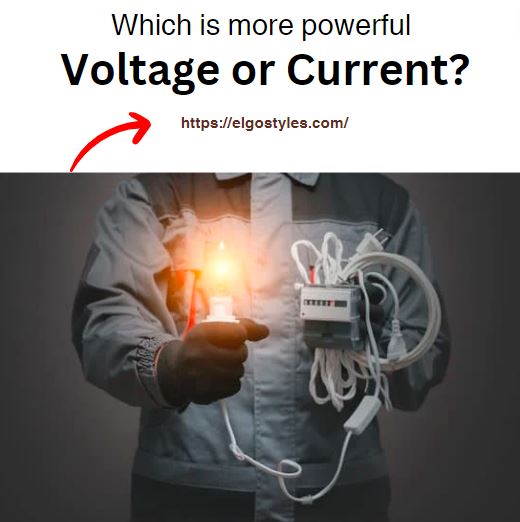Answer:
Voltage and current are different aspects of electrical systems. Neither is inherently more powerful than the other; their significance depends on the context and application.

Reasoning:
Voltage and current are fundamental electrical quantities. Voltage (measured in volts) is the potential energy per unit charge, while current (measured in amperes) is the flow of electric charge. Power (measured in watts) is the product of voltage and current (P=VI). In various applications, one may be more influential than the other. For example, high voltage is essential for long-distance power transmission, while high current is crucial in certain electrical devices.
FAQs:
Q: Is voltage or current more dangerous?
A: Current is typically considered more dangerous because it directly affects the body’s tissues.
Q: Which is more important in household circuits, voltage, or current?
A: Both are important, but voltage is what powers devices, while current depends on the device’s resistance.
Q: Does high voltage mean high power?
A: Not necessarily. Power depends on both voltage and current. High voltage alone does not guarantee high power.
Q: Why is high voltage used in power transmission lines?
A: High voltage reduces energy loss during long-distance transmission by minimizing current.
Q: Can you have high current without high voltage?
A: Yes, by reducing resistance, you can have high current with low voltage.
Q: What happens if voltage is too high in electronics?
A: Excessive voltage can damage electronic components.
Q: In batteries, is it the voltage or current that matters for performance?
A: Voltage influences device compatibility, while current affects the runtime.
Q: Why do some devices require specific voltage levels to operate?
A: Devices are designed to operate optimally at specific voltage levels for efficiency and safety.
Q: How is power affected when voltage is doubled?
A: Power is quadrupled when voltage is doubled, assuming constant resistance.
Q: Can you have high voltage and low current simultaneously?
A: Yes, it’s possible through high resistance, following Ohm’s Law (V=IR).
 Electrical Engineering World Wiring a Brighter Tomorrow!
Electrical Engineering World Wiring a Brighter Tomorrow!


